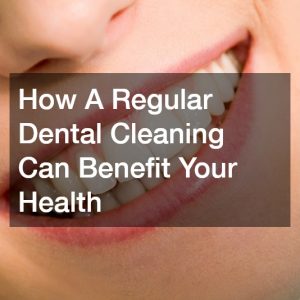Introduction
A smile can be one of your most powerful assets — it conveys warmth, confidence, and approachability. In the United States, where personal presentation often plays a role in both social and professional success, the desire for a brighter smile has fueled a massive teeth whitening industry. According to the American Academy of Cosmetic Dentistry (AACD), over 80% of adults believe a healthy, white smile makes them more attractive, and a significant percentage would invest in cosmetic dental treatments to improve theirs.
The market now offers an overwhelming variety of teeth whitening options — from professional in-office treatments to affordable over-the-counter products you can use in the comfort of your home. Add to that the growing trend of natural remedies, and consumers have more choices than ever before.
However, not all whitening methods are created equal, and understanding their effectiveness, safety, and maintenance requirements is essential before you begin.
Stained or discolored teeth can be caused by a variety of factors: coffee and tea, red wine, tobacco use, certain medications, aging, or simply genetics. Fortunately, today’s whitening technology can address these concerns with varying degrees of speed and intensity. Some treatments can produce dramatic results in a single appointment, while others take weeks of consistent application.
This comprehensive guide will break down the most popular whitening methods, how over-the-counter products compare, potential safety concerns, how long results last, and expert tips for keeping your smile bright for years to come. Whether you’re looking for an instant glow-up for a special event or a long-term maintenance plan, this article will help you make an informed decision based on your budget, lifestyle, and dental health needs.
1. What Are the Different Methods of Teeth Whitening?
a. In-Office Whitening Treatments
Professional whitening performed by a dentist offers the fastest and most noticeable results. Using high-concentration peroxide gels combined with LED or laser light, these treatments can lighten teeth by several shades in under an hour. This option is ideal for people with deep stains or upcoming events where they want quick, dramatic results.
Pros: Immediate results, professional supervision, longer-lasting whiteness.
Cons: Higher cost, potential for temporary sensitivity.
b. At-Home Whitening Kits
Custom-made trays from your dentist or high-quality store-bought kits allow you to whiten your teeth gradually at home. These kits typically contain a lower concentration of peroxide gel than in-office treatments and require daily use for 1–2 weeks.
Pros: More affordable than in-office treatments, flexible scheduling.
Cons: Results take longer, requires consistency.
c. Whitening Toothpastes
These toothpastes use mild abrasives or low concentrations of peroxide to remove surface stains. While they won’t dramatically change the color of your teeth, they help maintain results after professional whitening.
Pros: Easy to integrate into daily routine, inexpensive.
Cons: Limited whitening power, only effective for surface stains.
d. Natural Teeth Whitening Remedies
Popular options include baking soda, hydrogen peroxide rinses, and oil pulling with coconut oil. While these may provide some improvement, they are not as powerful or consistent as professional treatments.
Pros: Low-cost, chemical-free alternatives.
Cons: Results vary, some methods may damage enamel if overused.
e. Whitening Strips and Gels
Widely available at drugstores, whitening strips are coated with peroxide-based gel and applied to teeth for 30 minutes a day over 1–2 weeks.
Pros: Affordable, convenient.
Cons: May cause gum irritation, uneven whitening if not applied correctly.
2. How Effective Are Over-the-Counter Whitening Products?
a. Understanding Active Ingredients
Most OTC whitening products use hydrogen peroxide or carbamide peroxide as the active bleaching agents. Higher concentrations generally deliver faster results but can increase sensitivity.
b. Color Change Expectations
Most people can expect to see their teeth lighten by 1–2 shades with OTC products, compared to 5–8 shades from professional treatments.
c. Safety and Side Effects
The main risks include temporary sensitivity, gum irritation, and, in rare cases, enamel weakening from overuse.
d. Product Comparisons
-
Whitening Strips: Most effective OTC option.
-
Toothpaste: Best for maintenance.
-
Gels/Pens: Good for targeted touch-ups.
e. Long-term Results
OTC products typically last a few months if good oral hygiene is maintained, though results may fade faster if you consume staining foods or beverages regularly.
3. Are Teeth Whitening Treatments Safe?
a. Potential Risks and Side Effects
Most whitening treatments are safe when used as directed. Risks include temporary tooth sensitivity and gum irritation.
b. Sensitivity Issues
If you experience discomfort, switch to a toothpaste designed for sensitive teeth and reduce the frequency of whitening sessions.
c. Dental Health Considerations
Whitening should only be done on healthy teeth. Cavities, gum disease, or exposed roots should be treated before starting.
d. Professional Guidance
A dentist can assess your enamel health, recommend the most suitable method, and ensure safe application.
e. Safety Tips for At-Home Use
-
Follow manufacturer instructions.
-
Avoid overuse.
-
Don’t apply gel to gums.
4. How Long Do the Effects of Teeth Whitening Last?
a. Factors Influencing Longevity
Diet, oral hygiene habits, and smoking can shorten whitening results.
b. Maintenance Practices
Regular brushing, flossing, and occasional touch-up whitening can extend brightness.
c. Foods and Beverages to Avoid
Coffee, tea, red wine, and dark berries are top stain culprits.
d. Follow-Up Treatments
Most people need touch-ups every 6–12 months.
e. Realistic Expectations
Whitening is not permanent, but good habits can extend results for years.
5. What Are the Best Tips for Maintaining a Bright Smile?
a. Regular Oral Hygiene Routine
Brush twice daily with fluoride toothpaste, floss at least once a day, and use antibacterial mouthwash to reduce plaque and prevent new stains from forming.
b. Avoiding Staining Foods
Limit coffee, tea, and red wine. If consumed, rinse or brush afterward. Using a straw for cold beverages can help reduce contact with teeth.
c. Hydration and Water Intake
Water helps wash away food particles and prevent dry mouth, which can increase staining risk. Aim for at least 8 glasses per day.
d. Regular Dental Check-Ups
See your dentist twice yearly for cleanings and to monitor enamel health.
e. Lifestyle Changes for Better Oral Health
Quit smoking, manage acid reflux, and eat a nutrient-rich diet to strengthen enamel and maintain whiteness.
Conclusion
A bright, confident smile is within reach for nearly everyone. The key is selecting the whitening method that aligns with your needs, budget, and lifestyle — and maintaining it with consistent care. Whether you opt for a professional treatment for instant results or a gradual at-home solution, the long-term success depends largely on your daily habits and oral hygiene.
Whitening your teeth isn’t just about vanity — it can boost self-esteem, improve your first impressions, and even encourage better oral health routines. Just remember: overuse or improper application can cause more harm than good, so consult your dentist before starting.
Your smile is one of your most noticeable features — make it count. With the right approach, you can enjoy a whiter, healthier smile that reflects your best self every day.






